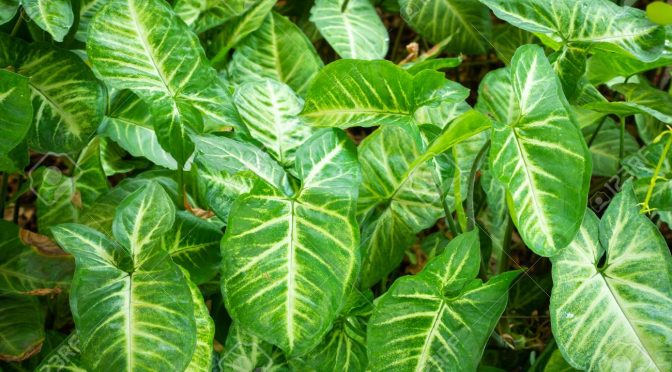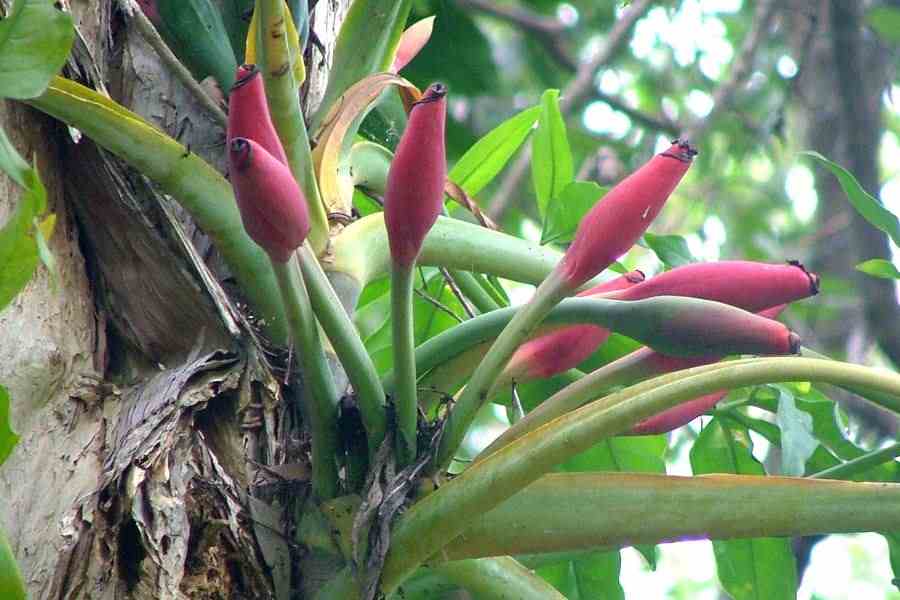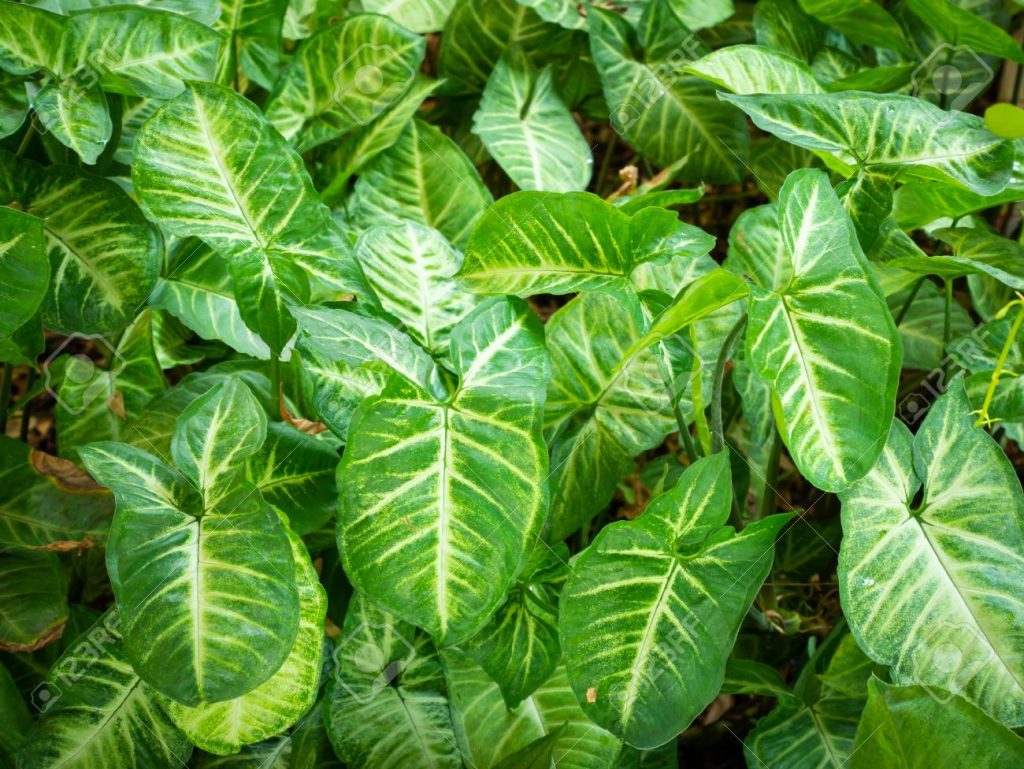The species is native to Mexico, Central America (i.e. Belize, Costa Rica, El Salvador, Guatemala, Honduras, Nicaragua and Panama), parts of the Caribbean (i.e. Trinidad and Tobago) and tropical South America (i.e. French Guiana, Guyana, Surinam, Venezuela, Brazil, Bolivia, Colombia, Ecuador and Peru).
The younger stems are sometimes slightly bluish-green in colour (i.e. glaucous) and often contain a milky sap (i.e. latex). They are hairless (i.e. glabrous), smooth in texture, and slightly fleshy (i.e. succulent). These stems readily develop roots (i.e. adventitious roots) at their joints (i.e. nodes). Older stems turn pale brown and can become slightly woody (15-25 mm thick), and the climbing stems develop aerial roots which adhere to the tree or structure that they are climbing on.
The alternately arranged leaves vary in size, shape and colour depending on their position on the plant (and also the cultivar).
This species almost exclusively reproduces vegetatively in the wild, and is propagated and spread by cuttings in cultivation.
Stem segments and cuttings are commonly dispersed in dumped garden waste and woodchips. Once established, a plant will spread outwards, forming a colony, and taking root wherever its stems touch the ground. Stem segments can also be spread by mowers, slashes and floodwaters.
Syngonium (Syngonium podophyllum) is regarded as an environmental weed in Queensland, and as a potential environmental weed or “sleeper weed” in other parts of northern and eastern Australia.



